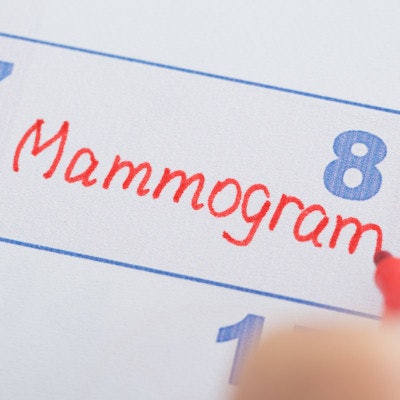
The breast cancer screening gap between American Indian and white women has narrowed, but disparities still persist, suggest findings published March 1 in the American Journal of Preventive Medicine.
A team led by Eric Christensen, PhD, from the Harvey L. Neiman Health Policy Institute in Reston, VA, found steeper declines in mammography use over the last 15 years among white women than among American Indian women. However, they also found that the odds of mammography use across all urbanicity categories were less for American Indian women than white women in comparison with their counterparts in metropolitan areas.
"Policies to reduce disparities need to consider these differences," the Christensen team wrote.
Previous reports suggested that breast cancer screening among American Indian women is consistently below that of white women. Access, costs, and health have been identified as factors in this disparity. However, cultural factors, trust, and knowledge about mammography have also been identified as contributors to this trend.
As the last claims-based trends were from 1991 to 2001, Christensen and colleagues wanted to update these mammography trends and also assess the impact of rate, urbanicity, and income on long-term use of mammography screening.
They looked at data for women ages 40 to 89, using a 5% sample of Medicare fee-for-service beneficiaries residing in Arizona, California, New Mexico, Oklahoma, and Washington. They also used multivariable logistic regression to examine impact.
The team found that annual age-adjusted mammography use declined overall from 205 per 1,000 in 2005 to 165 per 1,000 in 2019. However, white women experienced a steeper decline at 3.06 per 1,000 compared with 0.65 per 1,000 seen in American Indian women (p < 0.001).
While American Indian women were found to be at higher odds of not using mammography, these odds differed among categories. For example, American Indian women had odds ratios [OR] of 0.96 for rural, 1.05 for small towns, and 1.23 for micropolitan areas compared with metropolitan for reference. For white women, the ORs were 1.47 for rural, 1.48 for small towns, and 1.65 for micropolitan areas.
The researchers also reported mammography use was 31% higher for white women (OR =1.31) in higher-income communities. However, they found no evidence that income impacted such use for American Indian women (OR = 0.95).
"This may indicate that although income is generally a protective factor in cancer screening, there are other factors, likely systemic, that may dominate screening decisions in the American Indian communities," the authors wrote.
The study authors suggested that policy changes could address cultural barriers to screening. They called for future studies to look at racial gradients for American Indian women in order to more fully inform policies that look to mitigate disparities.




















